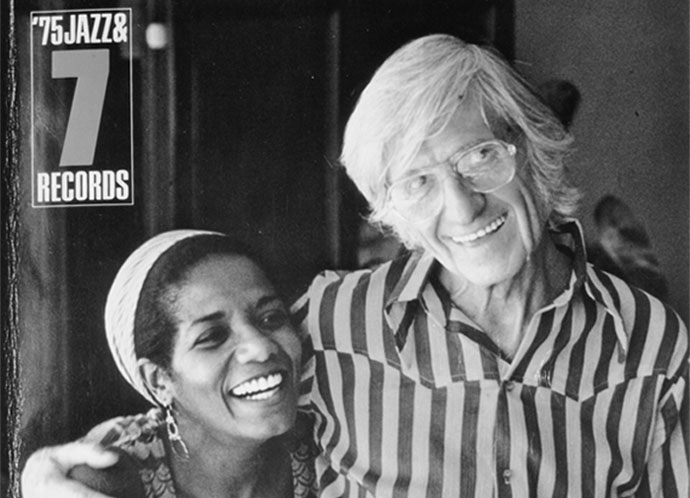 Gil Evans NPR Interview "Gil at 100" Transcript
Gil Evans, Essential Jazz Arranger, At 100http://www.npr.org/templates/transcript/transcript.php?storyId=152577588 Copyright ©2012 National Public Radio. For personal, noncommercial use only. See Terms of Use. For other uses, prior permission required. May 13, 2012 - RACHEL MARTIN, HOST: Pianist Gil Evans was one of the most important jazz arrangers of the 20th century, an innovator who brought orchestral colors and textures to jazz. He was a pioneer of the cool sound and famous for his collaborations with Miles Davis. Evans was born 100 years ago today. From New York, Tom Vitale has this tribute. TOM VITALE, BYLINE: Gil Evans is best known for music he wrote between 1957 and 1963 for his 19-piece orchestra backing trumpeter Miles Davis. (SOUNDBITE OF MUSIC) VITALE: The albums "Sketches of Spain" and "Porgy and Bess" were hailed for their rich harmonies and use of instruments not usually associated with jazz bands. But in a 1980 interview at a west side recording studio, Evans said he wanted to use the instruments of a traditional orchestra in a new way. GIL EVANS: Many great compositions have been written with the traditional sound of the orchestra. You know what I mean? Nothing much has been added to it as far as sound is concerned. (SOUNDBITE OF MUSIC) VITALE: Evans gave the orchestra a different sound by creating unusual harmonies, using colors he borrowed from Debussy, Ravel and Stravinsky. EVANS: I got the harmonic language from the French, Spanish and Russian Impressionists, you know. That's where the harmony comes from. VITALE: Evans made it sound easy, but Emile Charlap, a music copyist who worked with Evans in the 1950s, filling out and finishing his scores, says the arranger labored to create that new sound. EMILE CHARLAP: He sat there all night composing. I had a secretary who worked for me who lived upstairs. And she told me that she can't sleep because Gil is there all night, and he plays F, F, F, F, F, F, F, F, F, F all night long. And that was like the beginnings of "Sketches of Spain." VITALE: Gil Evans arranged "Sketches of Spain" in Charlap's West 48th Street offices. CHARLAP: Gil was beyond belief. He would work on one thing forever. He wanted it to be the note. He would write a whole arrangement and leave out one note, and come back two weeks later to put that right note in. (SOUNDBITE OF MUSIC) VITALE: Evans spent a lifetime creating a new sound for a jazz orchestra and he did it without any musical education. He was born in Toronto on May 13, 1912, then moved with his family to Stockton, California. He said he learned how to handle a popular song from copying the arrangements on early Louis Armstrong records. In the 1930s, he led his own dance band in Stockton. But his music became more complex when he joined bandleader Claude Thornhill's orchestra in 1941. (SOUNDBITE OF MUSIC) VITALE: Then, in the late 1940s, Evans met Miles Davis. Their initial collaboration grew out of informal jam sessions at the arranger's apartment on 52nd Street, where some of the best young beboppers in town showed up. The result was a series of recordings that came to be known as "The Birth of the Cool." (SOUNDBITE OF MUSIC) VITALE: These recordings are credited today with launching the cool sound in jazz. Among the musicians was a young French horn player, Gunther Schuller. Now a world-renowned composer, Schuller says the arrangements were amazing. GUNTHER SCHULLER: For example, a piece called "Moon Dreams," which written by Glen Miller's pianist and had a certain popularity, but Gil Evans just re-composed this piece in his own much more advanced style. (SOUNDBITE OF MUSIC) SCHULLER: He composed this coda, which starts with a dramatically dissonant chord, very loud. And over a period of about, let's say, a minute and a half, the music subsides. It gets softer and softer, and it finally comes to a very beautiful, soft ending. And it's just an incredible piece of composition. How he came up with that back in 1948, '49, it's just beyond even my comprehension, and I knew him very well. VITALE: Gil Evans wrote dozens of scores that were never recorded. Composer Ryan Truesdell spent the last three years unearthing 50 of them. Truesdell assembled a modern orchestra to record 10 of those songs for a record released today, for Evans's birthday, called "Centennial: Newly Discovered Works of Gil Evans." (SOUNDBITE OF MUSIC) VITALE: Truesdell says what makes Gil Evans' sound distinctive is an air of mystery that comes from the space between the notes in his chords. RYAN TRUESDELL: It's almost like a cloud that the music is able to float on. And with the brass section, for instance, he would write four, maybe five-note voicings, but instead of putting them really spaced out so they took up all that range from bottom to top, he would put them all together. And then all of a sudden, there's all this air between the bass and these instruments. And so it kind of gives it a floaty, very light effect. (SOUNDBITE OF MUSIC) |
|
